Everything for the shooter: weapons modules in a new round of development
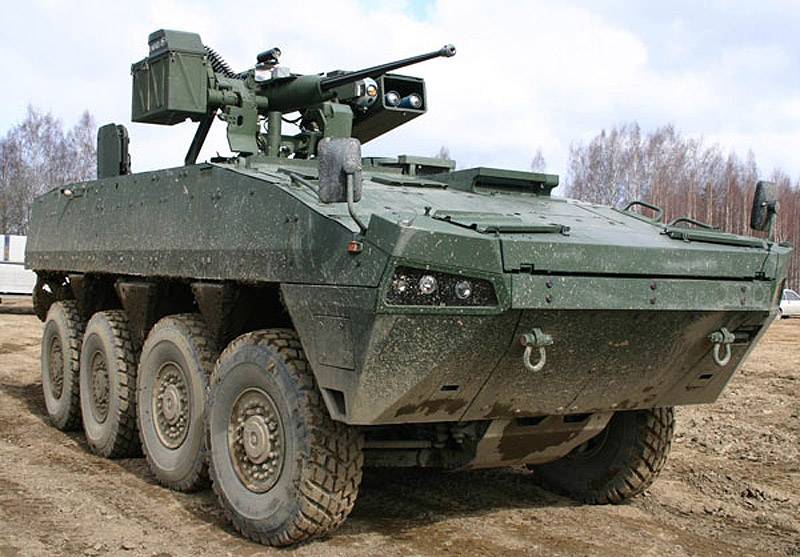
New systems
Over the past few years, a number of new SLVMs have been developed for ground transportation platforms, as leading companies in this field keep their finger on the pulse, perfectly understanding the changing needs of existing and potential customers.
The new Fieldranger range from Rheinmetall from Germany includes four different weapons modules: Fieldranger Light weighing 75 kg, designed to be mounted on light vehicles and capable of accepting machine guns of the caliber 5,56x45 mm or 7,62x51 mm: Fieldranger Multi, which is suitable for installation on tracked and wheeled vehicles and can equipped with an 12,7-mm machine gun or 40-mm automatic grenade launcher; Fieldranger Dual for medium and heavy platforms that can accept primary and twin auxiliary weapons; and finally, the Fieldranger 20 - a medium-caliber system armed with an 20-mm Oerlikon-KAE automatic cannon.
Rheinmetall's RUMP portfolio also includes the lightweight Amarok, dual-weapon Nanuk and Qimek single view module weapons. However, according to Alan Tremblay of Rheinmetall Canada, the company's main focus is currently on the Fieldranger family. Although Fieldranger has not yet found its customers, Tremblay noted that potential customers are very interested in this line.
Tremblay emphasized that the RUMF market is saturated to the limit due to the large number of companies involved in this business. This sector has expanded significantly, while 10 years ago there were only about six major suppliers of RLMS. Now more than 40 companies in the world offer similar systems. This growth is especially noticeable in the West, where many countries have their own suppliers of such systems.
- Tremblay said, adding that Rheinmetall focuses on second-tier customers, that is, those who have not yet bought the RUMP. “We hope to close deals this year in Asia and Africa.”
Today, there are four main preferences among customers in the field of RLMS. The first, although SMPS were traditionally built around smaller calibers, today there is a growing demand for larger sizes, extending primarily to the medium-caliber area. Second, users need improved stabilization of the modules. Third, appetites for improved target tracking are growing and, finally, operators want to be able to integrate their RPMs into battle control systems. “These are the four areas that customers really want to go,” Tremblay noted. “They want more opportunities for the same price or even lower, which creates certain difficulties for the industry.”
Underscoring that there are many requirements even within these four main trends, Tremblay noted that under the various contracts that Rheinmetall has received over the past decade, “we never sold the same module twice. All of them were modified and adapted to the special needs of customers. Hypothetically, a client from North Africa may wish to establish an optoelectronic production system in a European country along with Russian weapons. We must be able to implement in our systems any solutions that our customers need. ”
Speaking about the importance of the effective integration of the SAMP with combat control systems. Tremblay said that RLMS should be able to send data and information or images from vision devices ... since we have an open architecture, we can do this fairly easily. ”
New sizes
The Norwegian company Kongsberg Defense and Aerospace is the main supplier of SLVMs and uninhabited towers, as it produces the very popular Protector family modules and also supplies the CROWS (Common Remotely Operated Weapon Station) weapon modules to the US Army.
The Norwegian company today has supplied thousands of systems to the army and this cooperation will continue, at least until the mid-2020s. In September 2018, Kongsberg received a five-year contract worth up to $ 498 million for the production and logistics of additional M153 Protector systems, on the basis of which a number of other transactions were signed.
The Protector line includes several different platforms. According to the manufacturer, the SUMP Protector is a modular system designed to work in extreme environmental conditions. The system allows the operator to work from a protected position, use their stabilized optics and lasers to observe, detect and shoot targets with increased accuracy and low indirect losses. The fully stabilized platform provides excellent visibility and capture capabilities when the shooter is able to keep his sights on target regardless of the ballistic decision made for weapons.
Another option with similar benefits is the Protector Low Profile SMPS, which is manufactured for tanks M1A2 Abrams of the American Army. According to the manufacturer, a system designed for small- and medium-caliber weapons can be installed on any type of platform.
A representative from Kongsberg drew attention to new orders for Protector modules, which the company received as evidence that such systems were more often included in machine programs.
According to his point of view, the overall market for RUMF has declined somewhat in recent years, although it has become more competitive. “Competition is of course tougher. Many other companies are trying to catch up with us. ”
He added that Kongsberg sees a need to increase the range of sensors and increase the firepower of the armament of its SAMP, noting the tendency to integrate anti-tank or anti-aircraft missiles, for example, Javelin or Stinger. In response to these needs, the company developed the Protector LW30 module, which is slightly heavier than the standard version, but provides advanced features. It can have the main armament in the form of an 20-mm or 25-mm M230LF gun, as well as a coaxial 7,62-mm machine gun and anti-tank or anti-aircraft missiles.
He said that Kongsberg is considering connecting weapons systems to digital networks with a “set of services that help the operator.” The key result of this digital process will be significantly improved operational capabilities, especially increased fire efficiency.
A Kongsberg spokesman noted Protector Combat Services’s new development, software that integrates sensors and weapons and allows the exchange of target data, thus providing a new dimension for combined arms combat. He explained:
Positive outlook
Describing the use of RLMS (as well as uninhabited towers) in comparison with inhabited towers as a struggle of doctrines and cultures, which is still "fierce", Tremblay noted that many military men, although not deviating from inhabited decisions for a number of reasons, may not believe that that uninhabited systems will provide adequate situational awareness, for example.
“Many countries are looking at the possibility of maintaining a level of situational awareness without opening the hatch, but do not want to switch to new solutions,” he explained, adding that no more than 30% of the countries in the world have RUMW in service.
The SUMM sector, able to meet the requirements of customers of different levels of development and integration of combat capabilities, still has great potential. Market research shows that countries can update and supplement their ground forces and assets, including “certain types of weapons modules, offensive or defensive.” For example, at present, there is an increased demand for equipping trucks for the supply of fuel and exhaust vehicles, "there was no such need even 10 years ago."
In addition, the company integrated DUMV into its remotely controlled vehicles, which proved to be especially attractive to operators.
Said Tremblay.
Tremblay indicated that the operators are in demand for high reliability, high efficiency and high accuracy of the DUMW technology. He continued:
Built-in intelligence
FN Herstal also manufactures SMPS, including for ground platforms. The deFNder Light module is designed for machines that do not need a heavy machine gun, and is also well suited for perimeter defense tasks. It can accept 5,56-mm and 7,62-mm machine guns. The deFNder Medium module can be mounted on light, medium and heavy platforms and can be equipped with a variety of weapons, including the FN M3R .50cal machine gun, 40-mm grenade launchers, 5,56-mm FN Minimi light machine guns and 7,62-mm FN Mag.
A company representative said that there is a growing demand for certain "intelligent functions" to be built into the DUMS, and there is also a need for several such systems to work together. He pointed to several technical changes in the deFNnder line, for example, the inclusion of a radio channel that allows you to install DUMV on mobile Robots.
FN Herstal also did not bypass ground robots by installing the deFNder Medium module on the remotely controlled Themis machine of the Estonian company Milrem Robotics. Most likely, the use of RAMS along with habitable systems will increase, special attention will be paid to improved networking of various platforms. The company representative also pointed to the growing need for modularity and adaptability of systems to the needs of customers. In addition, the value of artificial intelligence will be growing, offering "automatic detection, recognition, target identification and increased situational awareness."
The Italian company Leonardo has several REMAs in its catalog, for example Cerberus, which the company developed together with Indra and Escribano Mechanical and Engineering. CERBERUS REMOTE integrates easily on all types of vehicles, both wheeled and tracked. The module is armed with the 30-mm MK44 Stretch Bushmaster gun (can be converted to the 40 mm caliber), coaxial 7,62-mm machine gun and ATGM.
According to Leonardo, the system is equipped with two stabilized optocoupler sights for the commander and gunner, located in the hull, while the tower is prepared to install various protection kits in order to meet customer requirements for ballistic protection levels. If necessary, additional sensors can be integrated, for example, sniper detection systems or laser warning alerts. The company confirmed that the development of the Cerberus SMPS was completed, and recently conducted firing tests in Spain, where the module was installed on the M113 BTR.
Leonardo, who also manufactures the HITFIST remote weapon system, identifies a number of market trends that have arisen in recent years, in particular the integration of active defense systems and anti-tank missiles in SMPS with medium-caliber guns. Missiles can increase flexibility regarding the neutralization of fortified targets over long distances, including MBT.
“The worldwide demand for REMFs continues to grow,” said a spokesman for EOS Defense Systems, a manufacturer of several RUMP models. “This is due to further network integration of the sensor-shooter systems and continuous improvements in the survivability of soldiers.” However, according to the representative, the initial position underlying the development of the SAMP. remains the same, namely the desire to improve operator safety.
The emphasis is now on optimizing weapons systems and integrating them with other airborne subsystems. We really can send a large amount of sensory information to other on-board systems, as well as receive data for targeting by external target designation commands, etc.
Small-sized programs
The Israeli company Rafael manufactures the Samson SMF family. A company spokesman said that demand for larger calibers is growing, customers are increasingly requesting modules with 30-mm guns and rocket launchers, asking to add and "integrate the Trophy active defense system and get a full package of survivability, maneuverability and mortality."
The requirement for the supply of ammunition from inside the machine today has become the industry standard, as well as the availability of ammunition for air blasting in the ammunition complex. Over the years, Rafael has added some features to increase the level of situational awareness of the operator, for example, automatic identification and classification of targets plus the function of simultaneous tracking of several circuits. The company improved module protection, increased accuracy and fire efficiency, and also improved survival through the installation of KAZ.
“Autonomy is becoming one of the key features,” said a spokesman for Rafael. As a result of this, she developed her own kit for advanced armored vehicles, which is based on two main elements - situational awareness and autonomous support. The latter will make it possible to reduce the crew of the car to two people, which will increase the efficiency of various platform systems, including REMW. In addition, it will allow autonomous identification and classification of targets.
Rafael has developed the Fire Weaver tactical network system, "which connects all sensors and shooters on the battlefield to increase situational awareness and significantly reduce the sensor shooter cycle." As part of the SUMM, it "transforms the weapon module and the entire platform from a separate element into a single network system." According to Rafael, she sought to ensure that this system did not occupy an excessively large volume in the platform and worked seamlessly with the other components of the RAMS.
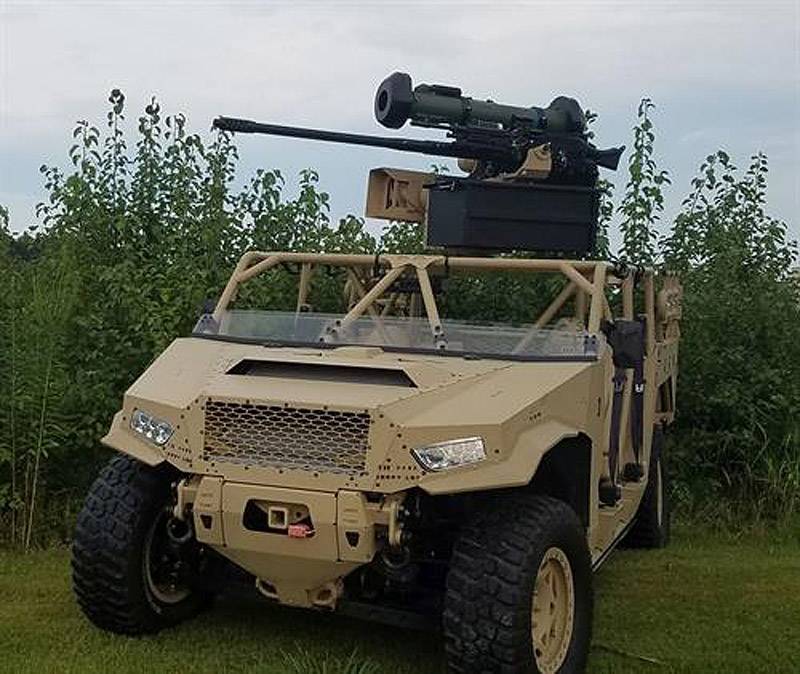
For a fighter
According to the representative of the Australian company EOS, it seeks to supply products that have "the largest and most accurate firepower on the lightest basis and are available in each market segment." For example, the R150 module was declared by the company as the lightest RELV in the world, it is capable of firing from 12,7-mm machine guns with an accuracy corresponding to their maximum performance characteristics.
This company has a number of systems in its portfolio, for example, the lightweight R150S and R800S, as well as the optionally inhabited T-2000 tower. The R150S module is designed to meet the requirements for self-defense, in particular, it is suitable for support machines for which mine protection is essential and the mass is limited. The R400S module includes a dual system with a gun for the 30x113 mm projectile and a coaxial machine gun along with the optional ATGMs. The R800S model in the pedestal design, which provides a significant reduction in mass, can take a full-size gun under the projectile 30x173 mm.
The new T2000 model, meanwhile, is a tower with integrated active protection, an all-round visibility system and a protected missile launcher.
The evolution of system architecture has simplified the integration of various subsystems, which is becoming increasingly popular with customers. “EOS’s products are functionally flexible and our architecture is adaptable so that we can work on the software and achieve the desired integration.” According to the representative, the company owns and controls the development of the entire system, that is, it has no problems integrating assemblies of different manufacturers into its systems. ”
An EOS spokesperson said that in the long run, RHMFs will remain more remotely controlled than autonomous, adding that the company "does not see the market's need to remove the operator from the equation." The volume of production of uninhabited systems is particularly striking, but at the same time, the volume of production of the SILV is not far behind. “Uninhabited platforms need pure uninhabited firepower solutions, such as our R-series systems,” said a representative of EOS. “This will be the only way to achieve compliance with the mass requirements for modern platforms.”
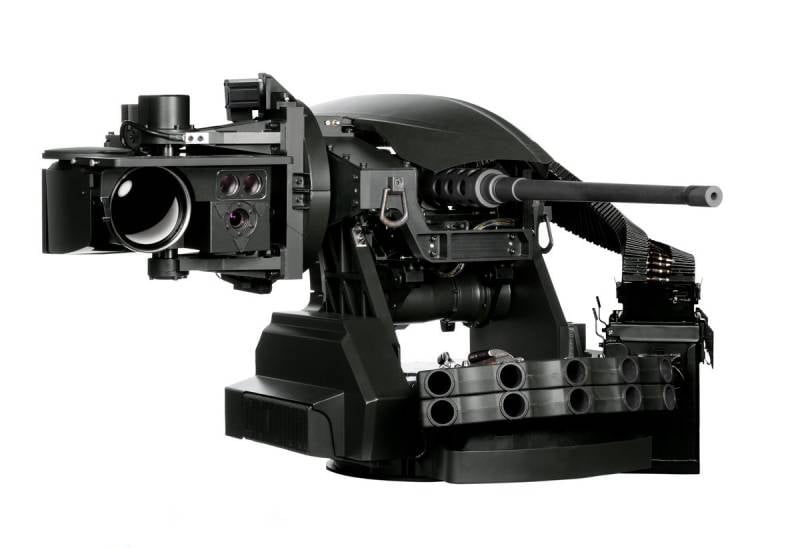
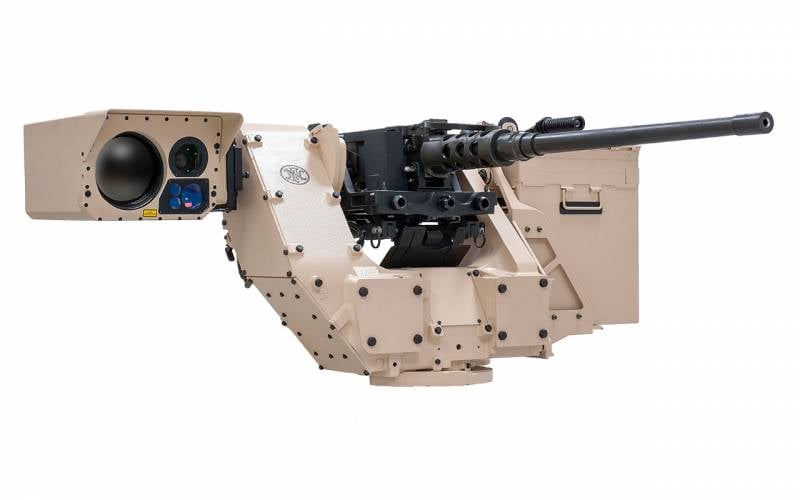
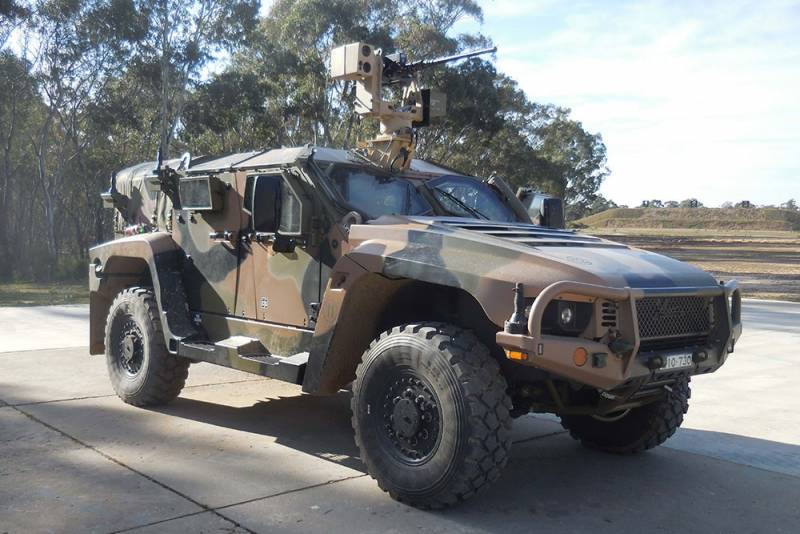
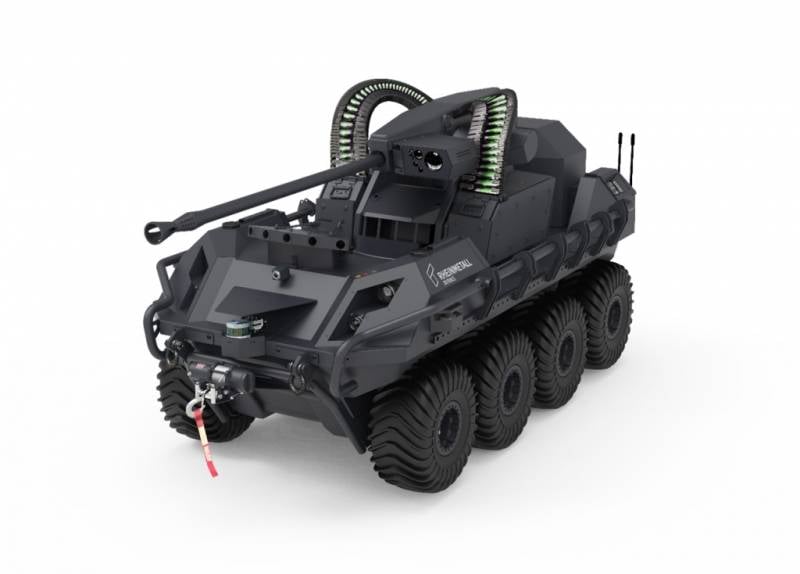
Information